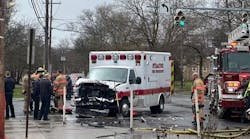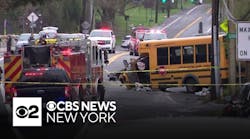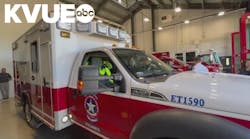Last month’s column began examining four environmental elements of our fireground size-up by discussing the first element, construction, as part of the risk-management process. To recap, you have been taught to look at what you are doing as a fire department, evaluate the risks and hazards, and then work to use the least hazardous ways of getting your job done.
Risk management requires you to:
- Identify risks
- Prioritize risks
- Eliminate the worst risks
- Move on and address the lesser risks
- Work to eliminate all risks from your operation
This month, we continue that discussion by taking a look at occupancies, access and life safety.
Occupancies
As the person riding the right-front seat, you can have a great impact on the gathering of information about occupancies and their attendant hazards, but you cannot do this unless you leave the fire station and take a look at what is going on in your community. The following are representative of hazards I have encountered:
- High-hazard occupancies. Explosives, chemical and paint manufacturing plants and storage facilities, lumber yards (think indoor lumber companies like Lowe’s and Home Depot)
- Medium-hazard occupancies. Machine shops, pawn shops, hotels with cooking facilities for residents, welding operations
- Low-hazard occupancies. Homes, adult day-care facilities, motels, schools, theaters
You are free to agree or disagree with my suggestions as to which occupancies are in which hazard class. That is not of great consequence. What is important is that you learn what occupancies exist within your operational territory and ascertain what hazards they might.
Access
How do you gain access to areas where your services are needed? Go out into your community and learn what is there by making pre-incident plans. Being aware of the structural methods and materials used in your district will help you make better decisions when it comes time to deploy your forces. In addition, you will discover the ways in which you and the people you are responding with will be able to get into the building (or area) where you need to get to work.
Once you know how to gain access to the structures in your territory, you will be better armed to make decisions on how to do your job. And it is the quality of these decisions that can keep you and your gang safe.
What to consider in this area:
- Is the building built on terrain that helps or hinders your ability to approach it?
- Is there room for fire apparatus to get close to the structure in the event of a fire or other emergency?
- Is there sufficient external access to enable associated fire and emergency response personnel to be brought near to the building for effective use?
- Is there is sufficient means of access into the building?
- Is there sufficient capability to move in and around the building for firefighting personnel to make rescues and fight fire?
- Is the building provided with sufficient internal water supply devices (sprinklers and standpipe systems)?
- Is there sufficient internal capacity to allow for smoke venting?
- Is there access to the building system controls?
There is only one way to learn all of these things – visit the facilities that seem to present the greatest hazard. Your agency must have a pre-incident planning program that allows for the orderly conduct of such visits. Access is a critical element for every form of emergency response.
Life Safety
A number of danger categories affect life safety. Consider all of these when you are the person riding the right-front seat:
- The danger to you as an individual
- The danger to those around you from your team
- The dangers to those people from the fire department who are responding to the incidents
- The danger to the people impacted by the emergency
- The danger to the community at large and anyone who is visiting
What types of dangers do you think I am referring to? Perhaps the primary life safety problem to which firefighters are exposed comes from the many forms of modern construction and construction materials that are designed and built to just barely overcome the force of gravity.
Here is a list of life-threatening matters you must always consider:
- Heat, smoke and other toxic byproducts
- Electrical hazards
- Injuries and death from the use of power appliances
- Structural collapse
- Chemical exposures
- Freelancing
Being in the right-front seat comes with serious responsibilities, not the least of which involves the safety of those entrusted to you. In addition to the range of hazards you will encounter, you must determine the work quotient of your team. You can seriously injure people by giving them more tasks than they are capable of performing safely. Plainly put, if you ask too few people to perform too many tasks, you risk killing or injuring them. One key to achieving success as the person riding in the right-front seat involves providing a proper size-up of every incident.
However, there is another size-up that is mentioned less frequently: Size-up your team so that you have a handle on its strengths and weaknesses. You will soon discover that your team has strengths and weaknesses. Build on the strengths while working to eliminate the weaknesses.
Wise leaders know what their people can do and what they cannot do. Try to operate within the identified limits of your team’s capabilities. Over time, you can broaden their list of “can-do” capabilities, but always minimize the risk to your team and maximize its ability to serve your community.






